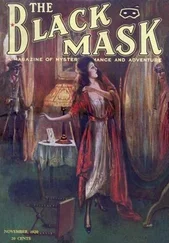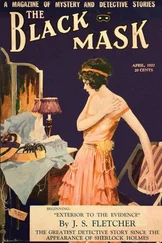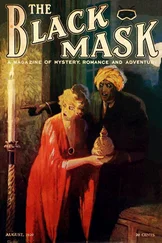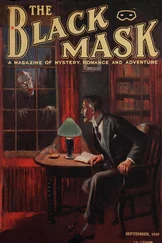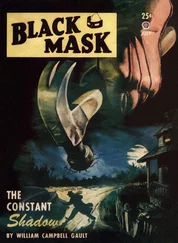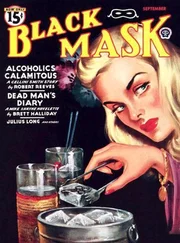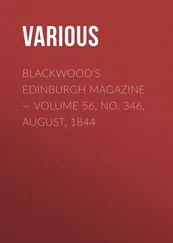John Baer - The Black Mask Magazine (Vol. 5, No. 5 — August 1922)
Здесь есть возможность читать онлайн «John Baer - The Black Mask Magazine (Vol. 5, No. 5 — August 1922)» весь текст электронной книги совершенно бесплатно (целиком полную версию без сокращений). В некоторых случаях можно слушать аудио, скачать через торрент в формате fb2 и присутствует краткое содержание. Город: New York, Год выпуска: 1922, Издательство: Pro-Distributors Publishing Company, Жанр: Детектив, на английском языке. Описание произведения, (предисловие) а так же отзывы посетителей доступны на портале библиотеки ЛибКат.
- Название:The Black Mask Magazine (Vol. 5, No. 5 — August 1922)
- Автор:
- Издательство:Pro-Distributors Publishing Company
- Жанр:
- Год:1922
- Город:New York
- ISBN:нет данных
- Рейтинг книги:4 / 5. Голосов: 1
-
Избранное:Добавить в избранное
- Отзывы:
-
Ваша оценка:
- 80
- 1
- 2
- 3
- 4
- 5
The Black Mask Magazine (Vol. 5, No. 5 — August 1922): краткое содержание, описание и аннотация
Предлагаем к чтению аннотацию, описание, краткое содержание или предисловие (зависит от того, что написал сам автор книги «The Black Mask Magazine (Vol. 5, No. 5 — August 1922)»). Если вы не нашли необходимую информацию о книге — напишите в комментариях, мы постараемся отыскать её.
The Black Mask Magazine (Vol. 5, No. 5 — August 1922) — читать онлайн бесплатно полную книгу (весь текст) целиком
Ниже представлен текст книги, разбитый по страницам. Система сохранения места последней прочитанной страницы, позволяет с удобством читать онлайн бесплатно книгу «The Black Mask Magazine (Vol. 5, No. 5 — August 1922)», без необходимости каждый раз заново искать на чём Вы остановились. Поставьте закладку, и сможете в любой момент перейти на страницу, на которой закончили чтение.
Интервал:
Закладка:
This description corresponded with Dr. Perry’s in only one respect, the height. Dr. Perry was stout and at least thirty pounds above normal weight. He had a black mustache and goatee and was dark complected. Further, the hair on his head consisted only of a black fringe, which ran around his temples and the back of his neck. Under the circumstances, it was not strange that Detective Carr’s conviction was a bit shaken and that he decided to keep his suspicions to himself until he had made a thorough investigation on his own account.
Neither of Mr. Kirven’s heirs had ever seen the missing Lesser. However, the detective dug up two Kirven & Lesser employees and two of the firm’s clients who had met Lesser personally a number of times. One of these men agreed to go up to Dr. Perry’s office and have his teeth cleaned. The other three were posted by the detective at different times in the restaurant where the doctor took his lunch.
Three of the men were positive that Mr. Lesser and Dr. Perry were not the same person. The fourth said:
“Well, the shape of his head is a little like Lesser’s, but you couldn’t get me to swear in court that they were the same person. No sir, not me.”
Detective Carr then tried to get at the mystery from a different angle. He looked into Dr. Perry’s past history. He discovered that Dr. Raymond K. Perry had graduated from the Horn Dental College in New York in 1914. The doctor, in accordance with the State law, had renewed his license every year. All of which was perfectly regular.
But — the doctor had rented his office on Forty-eighth Street ten months ago — or at just about the time that Mr. Lesser disappeared — and Detective Carr could find no record of his having practised his profession any time before that. Further, the records in the city bureau of taxes disclosed that Dr. Raymond K. Perry owned real estate to the value of one hundred and forty thousand dollars on East One Hundred and Fifty-seventh Street and that the property had been purchased at about the same time the doctor opened his dental office.
Dr. Perry lived on Claremont Avenue. No one at his address could shed the faintest light on his past career. He had rented the apartment ten months ago and had always been prompt in the payment of his rent. He never had visitors. When he rented the apartment he had remarked that he was living in Yonkers, but desired to live in the city in order to be closer to his office.
The detective consulted the city directories and the telephone books for the last seven years. He examined the membership lists of all the city and State dental societies. He telegraphed the national organization. He visited all the dental supply houses and manufacturers of dental instruments. The investigation yielded the name of Raymond K. Perry but twice, and these Perrys proved to be senior and junior, with an office in Brooklyn. The Raymond K. on Forty-eighth Street was not related to them.
All this would not have been unusual if there had been evidence that Dr. Perry had lived in another State before opening his office on Forty-eighth Street. But the doctor had said he had moved down from Yonkers. That a man practising the profession of dentistry and worth upward of a hundred and forty thousand dollars could leave an absolutely recordless existence did not seem probable, and yet the most painstaking search had revealed but one fact in the career of Dr. Perry previous to his opening the Forty-eighth Street office. That fact, as has been stated, was his graduation from the dental college in 1914.
Detective Carr’s weaknesses did not include the lack of persistence. He had great faith in his camera-eye quality and Dr. Perry’s past — or seeming absence of a past — only stimulated his activities.
The detective began the tiresome task of canvassing those dental offices of New York City which were large enough to employ additional dentists. Carr spent eight hours every day for seven weeks at this work; but finally his quest bore fruit.
The payrolls in Dr. Kiekbush’s office showed that in January, 1918, a Dr. Raymond K. Perry had been discharged for drunkenness. Nobody in the Kiekbush office recalled the appearance of Dr. Perry. Detective Carr, however, considered it significant that only one month later — February 1918 — Mr. William Lesser had entered the employ of Mr. Kirven.
The chain of evidence, though circumstantial, removed all doubt from the detective’s mind.
Still, although Detective Carr was perfectly convinced of Dr. Perry’s guilt, he knew that his evidence was not conclusive enough to persuade a jury. The fact that he could offer no direct identification was the weakness of his case. He felt that he had two lines of attack open to him. There was a chance that he could find some person or persons whose memory for faces was good enough to enable them to identify Dr. Perry as Mr. Lesser. His other hope lay in a direct attack upon the doctor himself.
This attack, of course, would have to be subtle. The doctor would have to be “squeezed,” prodded and annoyed by a series of seemingly innocuous questions and insinuations into betraying himself by some word or act. The work on the detective’s teeth was to be finished in three weeks. There were to be two appointments, each of an hour’s duration, every week. Detective Carr was to have six hours more of personal contact with the suspect.
II
Detective Carr was keeping his last appointment with Dr. Perry. The doctor was putting a root canal filling into the first molar on the upper left-hand side. The “nerve” or dental pulp had been removed and it remained only to seal the cavity with gutta percha and insert the amalgum filling.
The detective was seated comfortably in the dentist’s chair. Dr. Perry was standing nearby preparing his instruments.
“Not at all, Doctor,” said Carr in answer to a question by the dentist. “Detective work is not nearly as exciting as it is commonly supposed to be. It’s mostly dull, routine labor. Of course there are exceptions.
“I was working on a case not so long ago — quite an ordinary affair. A murder had been committed and the suspect had disappeared. My job was simply to tramp the streets and keep my eyes open. Hard work, Doctor, and not exactly exciting. I met the fellow by accident and arrested him. But when at headquarters the man removed his hat, I received the shock of my life. The prisoner was almost completely bald and yet it had been definitely proved that five days previous — when the crime had been committed — he had a crop of long, thick, brown hair.
“But this circumstance which at first seemed to ruin our case — the prisoner of course denied he was the wanted man — eventually proved his undoing. Men don’t usually lose a thick crop of hair in five days, we were sure of that. We consequently deduced that the prisoner had made himself bald by some artificial method. Rather unique, eh? You frequently hear of men disguising themselves by putting on wigs, but they seldom effect a disguise by pulling out their natural hair.
“Well, while the entire department was trying to puzzle out a way of proving that the suspect had removed his own hair, nature herself solved the mystery for us. The man was held in jail without bail. After three weeks the entire top of his head blossomed out like grass in the spring. That clinched it, of course. He confessed that he had first cut his hair short and then removed the hairs with an electric needle. This process required a couple of days, but his trick would have worked, if he could have applied the needle again on his hair as soon as it grew.”
The doctor, keeping his back turned to the detective, replied:
“A unique case, Mr. Carr. You might call it a bald murder.”
The detective laughed.
Читать дальшеИнтервал:
Закладка:
Похожие книги на «The Black Mask Magazine (Vol. 5, No. 5 — August 1922)»
Представляем Вашему вниманию похожие книги на «The Black Mask Magazine (Vol. 5, No. 5 — August 1922)» списком для выбора. Мы отобрали схожую по названию и смыслу литературу в надежде предоставить читателям больше вариантов отыскать новые, интересные, ещё непрочитанные произведения.
Обсуждение, отзывы о книге «The Black Mask Magazine (Vol. 5, No. 5 — August 1922)» и просто собственные мнения читателей. Оставьте ваши комментарии, напишите, что Вы думаете о произведении, его смысле или главных героях. Укажите что конкретно понравилось, а что нет, и почему Вы так считаете.

